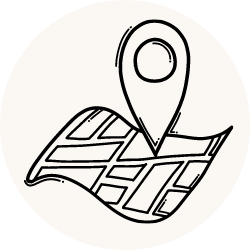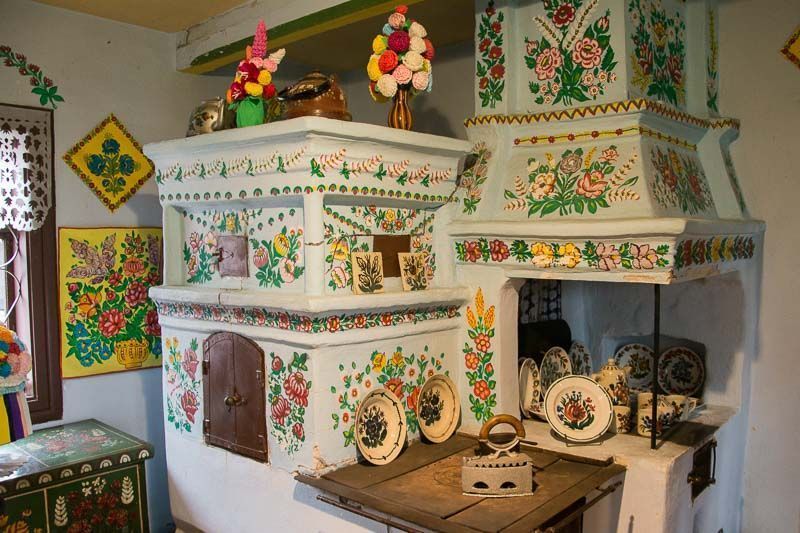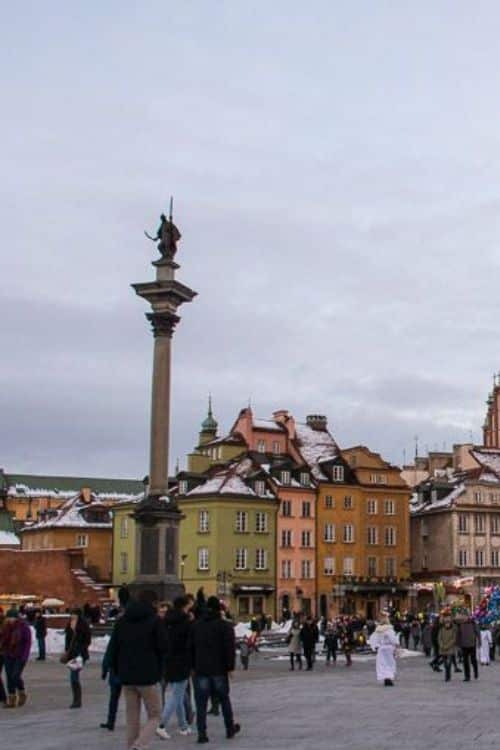How to Visit Auschwitz-Birkeanau and What to Expect
Planning to visit Auschwitz-Birkenau near Krakow? This essential guide provides a concise look into the largest concentration camp complex from World War II and helps you prepare for the emotional journey ahead.
Learn how to navigate travel logistics, understand museum guidelines, and make the most of your visit to this pivotal Holocaust memorial. Remember to book your guided tour well in advance.
Discover key insights to ensure a respectful and deeply informative experience.
In this blog post, I want to tell you about how to visit the Auschwitz-Birkenau concentration camp from Krakow and our experience visiting during winter.
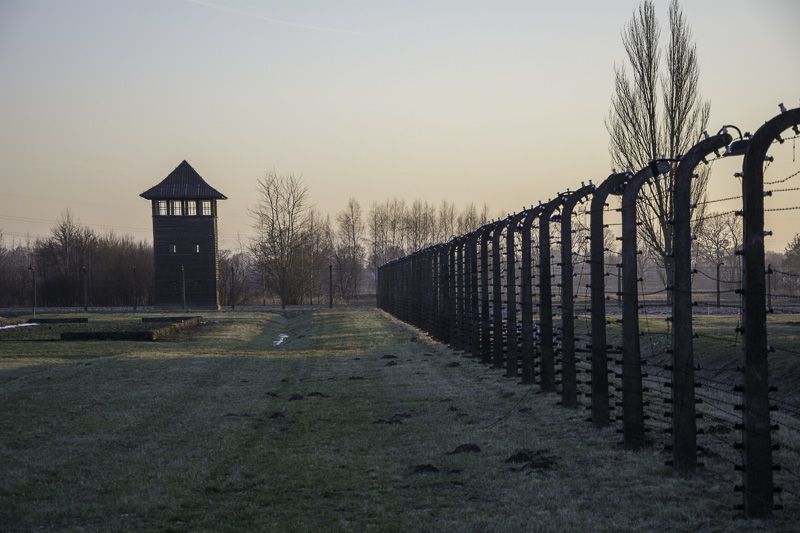
How To Get To Auschwitz From Krakow?
Auschwitz-Birkenau is located in the town of Oświęcim, about 70 kilometers west of Krakow, Poland. To visit this historically significant Holocaust site, you can choose from various modes of transportation such as by car, bus, or train.
By Car: If you prefer driving, take the A4 highway from Krakow and exit at Oświęcim. The journey typically takes around 1.5 hours. There are parking areas near the Auschwitz I and Auschwitz II-Birkenau sites where you can leave your car and explore the camp.
By Bus: Buses leave frequently from Krakow’s central bus station, located near the train station. The journey takes approximately 1.5 to 2 hours. Once you arrive at the Oświęcim bus station, it’s a short 10-minute walk to Więźniów Oświęcimia Street, which leads to the entrance of the Auschwitz I site.
By Train: Trains from Krakow to Oświęcim are also available and take about 2 hours. After arriving at the Oświęcim train station, it’s a 1.8 kilometers walk (approx. 25 minutes) to the Auschwitz I site, or you can take a local bus or taxi to cover this distance.
Joining organized guided tours, which offer transportation from Krakow and a knowledgeable guide to help you better understand the history and significance of the Auschwitz-Birkenau concentration and extermination camp.
Usually, if you are visiting Auschwitz, you stay in Krakow.
Entering Auschwitz
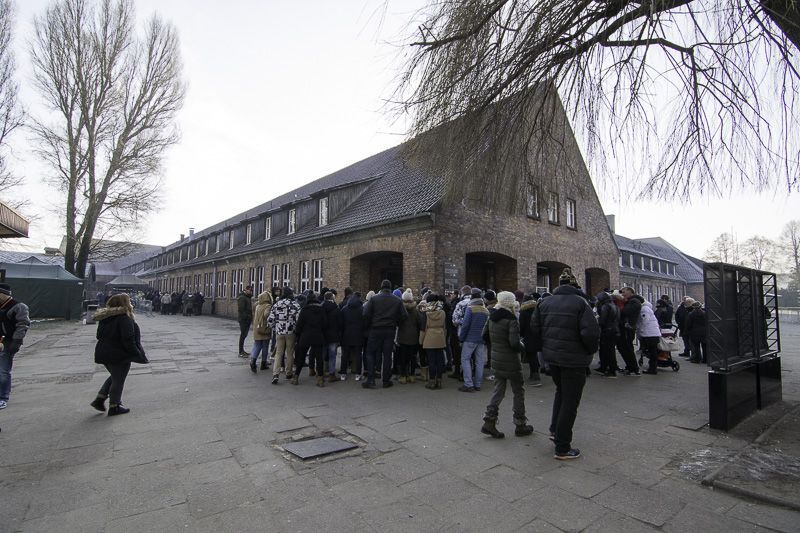
First, you should know that visiting Auschwitz is free if you do it on your own, without guides. Reservations are required because tickets are limited.
Booking a guided tour is perfect if you want someone explain to you each place you see, and take the most of your time.
If you have decided to hire the all-inclusive tour, you don’t have to think about planning your visit and the places you must visit. If you decide to go on your own, you must determine your preference.
The costs vary depending on whether you get an audio guide or decide to join a group. You can consult the official price list on the museum’s website or here.
History of Auschwitz
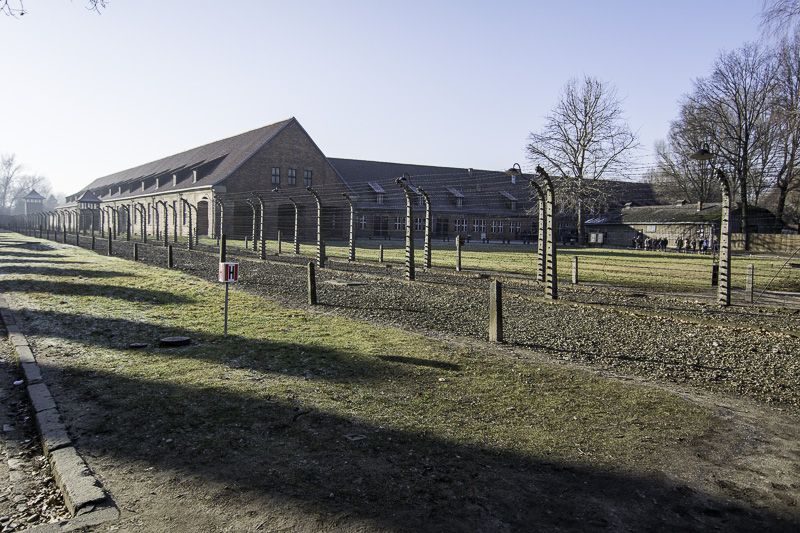
During World War II, Auschwitz-Birkenau became the largest and most infamous of the Nazi concentration and extermination camps. Established by the German Nazis in 1940, it initially served as a concentration camp for Polish political prisoners.
The site later expanded to include mass extermination facilities, becoming the epicenter of the Holocaust, where millions of Jews and other persecuted groups were murdered.
Auschwitz-Birkenau consisted of three main camps: Auschwitz I, the original concentration camp; Auschwitz II-Birkenau, the largest and deadliest extermination camp; and Auschwitz III-Monowitz, a labor camp that supplied slave workers to nearby industrial sites.
The complex played a crucial role in the Nazis’ “Final Solution” – a plan to systematically eradicate the Jewish population of Europe.
Numerous methods of mass extermination were employed at Auschwitz-Birkenau. The primary method was the systematic use of gas chambers, where victims were asphyxiated with a lethal pesticide.
Apart from gas chambers, thousands were murdered through forced labor, cruel medical experiments, starvation, and executions. Estimates of the total number of people killed at Auschwitz range from 1.1 million to over 1.5 million, with the majority being Jews.
As the tide of the war turned against the Nazis, they attempted to cover up their crimes by destroying evidence of the genocide.
They dismantled gas chambers and crematoria and forced surviving prisoners on harrowing “death marches” in order to evacuate the camps. However, their efforts to erase their atrocities ultimately failed.
On January 27, 1945, the Soviet Army liberated Auschwitz-Birkenau, discovering the horrifying reality of the camp’s true purpose. Today, the site is managed by the Auschwitz-Birkenau State Museum in Poland, which serves as a memorial and research center.
Visiting Auschwitz-Birkenau is an essential experience for understanding the scale and the scope of the Holocaust and the unspeakable crimes committed by the German Nazis during this dark chapter of human history.
Visiting Auschwitz I And Auschwitz II-Birkenau
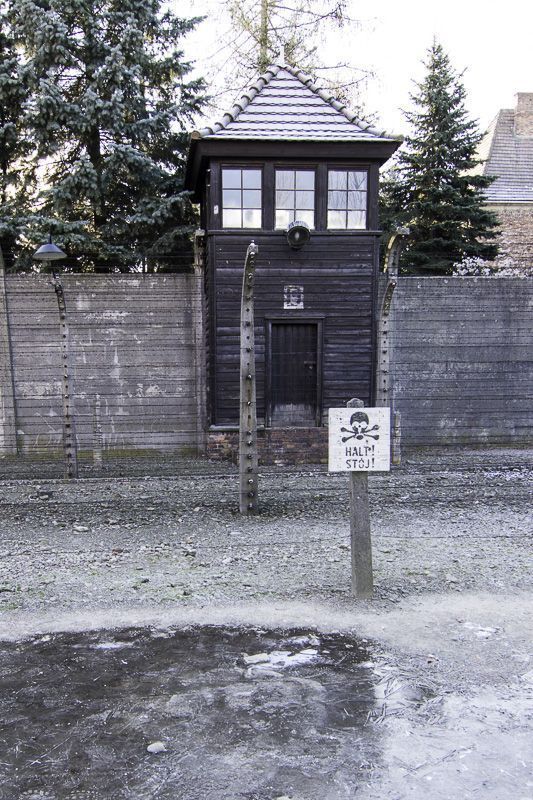
As I was saying, visiting Auschwitz is not a pleasure. You don’t do it to have a good time. You do it to become aware.
We went with a guide who told us the details of the camp.
“1,300,000 people were sent to Auschwitz,” reads the first poster I see. I read on, “1,100,000 Jews, 140,000 non-Jewish Poles, 23,000 Gypsies, 15,000 Soviet prisoners, and 25,000 prisoners of other ethnicities,” come on, they left no one with a head.
The visit takes place in an atmosphere of deep respect. People usually go in silence. No wonder. I did not want to be chattering while we visited. Some even got excited at certain times, and I could not help but look at them sideways.
We decided to make our trip to Poland in December. At this time of year, it is cold in Poland. We spent every day between three and six degrees below zero.
Visiting the camp with these temperatures, which are by no means the lowest in this area, gives you first-hand knowledge of the cold that the prisoners spent in the camp. The low temperature was one of the most common causes of death among them, along with hunger and lack of hygiene.
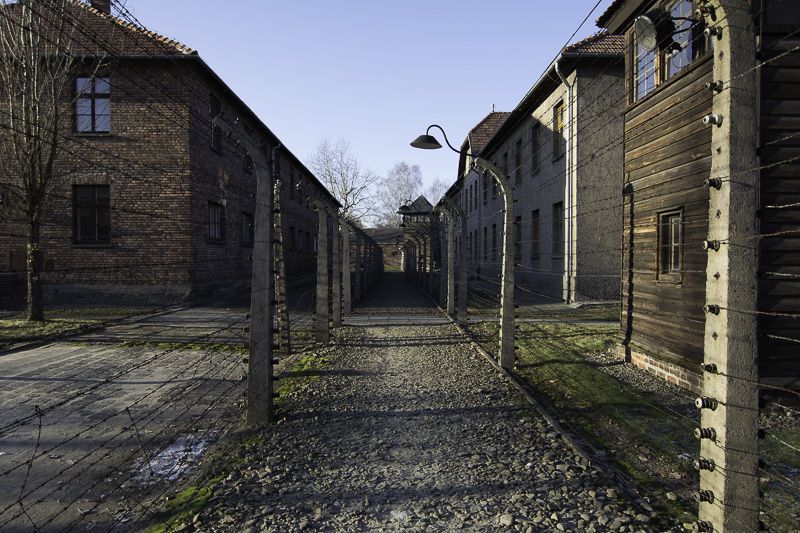
During your visit to Auschwitz-Birkenau, you’ll have the opportunity to explore both Auschwitz I and Auschwitz II-Birkenau, two of the most significant parts of the infamous Nazi concentration and extermination camp complex.
As you walk through the grounds and buildings, you’ll gain a deeper understanding of the harrowing history of this site.
At Auschwitz I, you’ll find a museum housed in the former SS administrative building. As you explore the museum, you’ll encounter various displays and exhibitions, providing you with a comprehensive understanding of the Holocaust and the atrocities that occurred at Auschwitz.
Some blocks, such as Block 2 and 3, are maintained as “reserve blocks” and presented in their original condition, offering you an authentic glimpse of the camp’s history.
Auschwitz II-Birkenau was the largest part of the Auschwitz complex, serving various functions during its operation. While walking around the former camp, you’ll find numerous barracks, including the wooden hospital barracks B-80 and B-210, serving as a stark reminder of the living conditions that the prisoners faced.
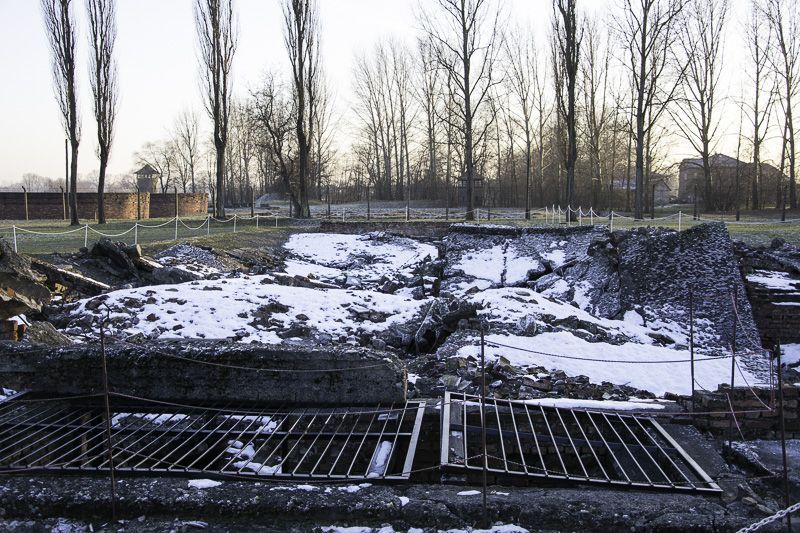
Do take note that some portions of the site are now in ruins due to the passage of time or deliberate destruction by the Nazis.
A significant feature of Auschwitz II-Birkenau are the remains of the gas chambers and crematoria. While visiting this site may be emotionally challenging, it’s essential to remember the importance of preserving the memory of the victims.
As you look at the ruins of these horrifying structures, you’ll come face-to-face with the cruel reality of the Holocaust and its devastating impact.
At the far end of Auschwitz II-Birkenau, you’ll find the railway sidings and platforms which were used to transport prisoners into the camp. The arrival area, known as the “ramp,” was where prisoners were often subjected to brutal “selections,” determining their fate – forced labor or immediate death.
As you explore Auschwitz I and Auschwitz II-Birkenau, remember the magnitude of what took place here and honor the memory of all those who suffered. By visiting this site, you’re playing an essential role in ensuring that the grim history of the Holocaust is never forgotten.
Auschwitz Camp I
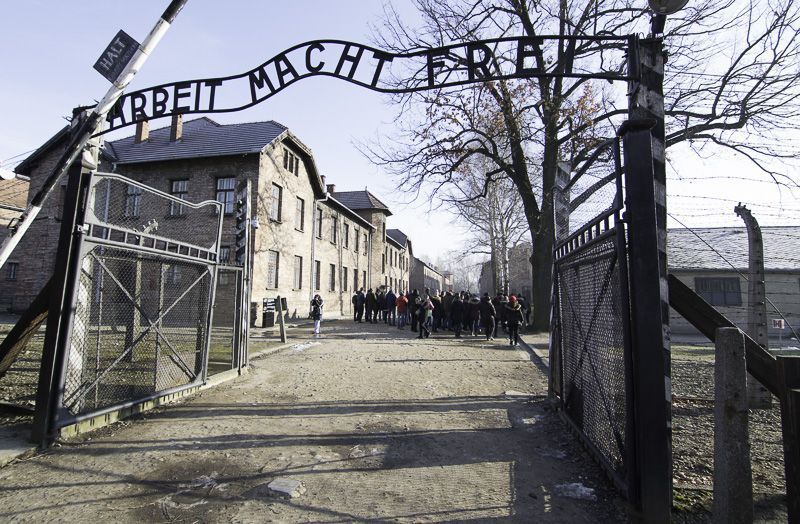
When you enter the camp, you enter through the main gate whose lintel message is a demoralizing irony: “Arbeit Macht Frei,” which means “Work sets you free” or “Work will set you free.”
We entered the Auschwitz camp proper. The first camp was not particularly large and was built from barracks that had previously belonged to the Polish army.
Their initial objective was not extermination but exploiting the prisoners as slaves and labor force.
Its first prisoners came from Tárnow, a city of medieval origin east of Krakow. Visiting the city, by the way, is highly recommended.
The field is surrounded by a double barbed wire fence that is scary and deeply saddening just to see. The barracks are aligned and perfectly placed in what could look like a small village with the same houses.
It is complicated to get an idea of what really happened there until you start to see inside the barracks the remains of the genocide.
It was in one of these ravines that the notorious Dr. Josef Mengele conducted experiments on human beings, women and twins, in Block 10.
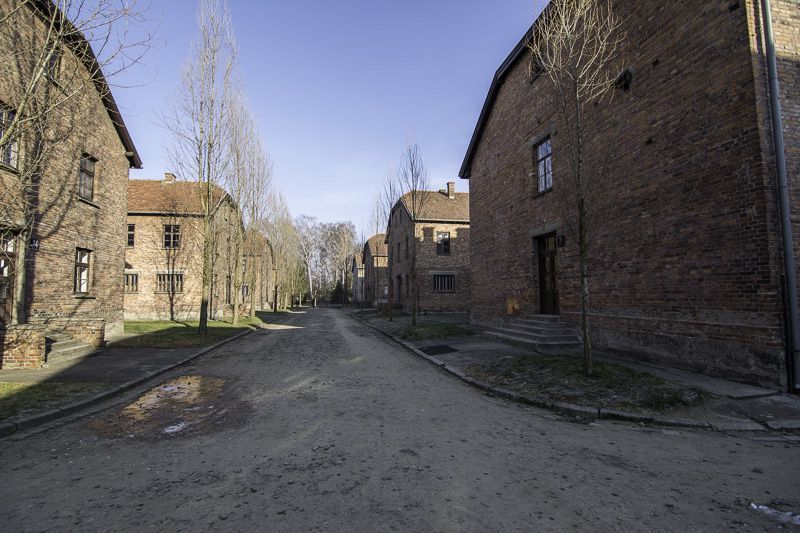
Auschwitz Block 11
Block 11 was the most feared because it was the camp’s dungeons. Disciplinary punishments were applied here.
Here you will see cells of one meter by one meter where four or five prisoners could be placed. Since the cell was tiny, they could only stand and could hardly move.
The vents of these cells were really small, and this was the worst thing because they could hardly breathe. Many died for this reason.
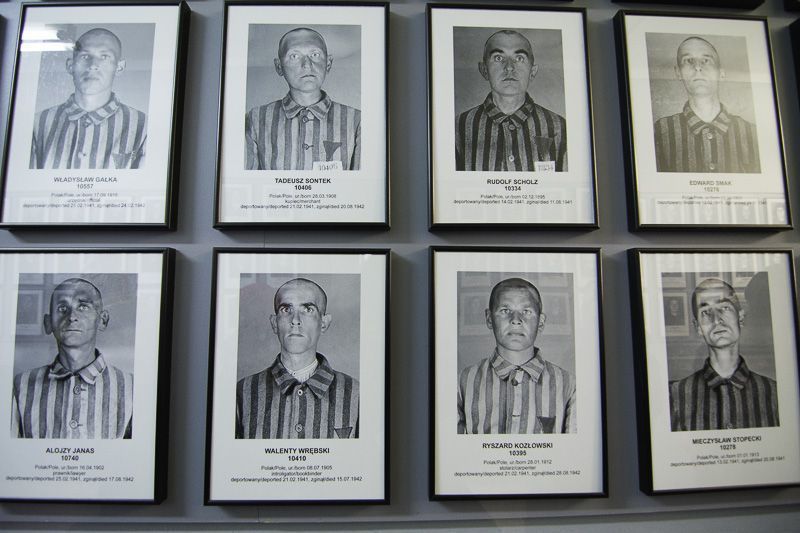
When we left block 11, in front of us, we found a steel beam on two wooden columns. Prisoners condemned to death were hung so the rest could see them and take an example.
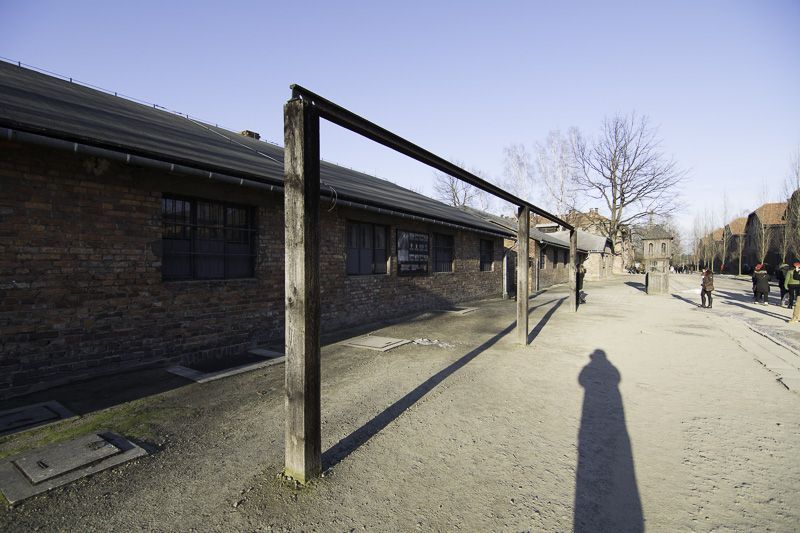
In one of the blocks, you will see hundreds of photos of prisoners hanging, with their age, date of entry, and date of death. Most of the women I saw lasted between three and four months, and the men about 10 months.
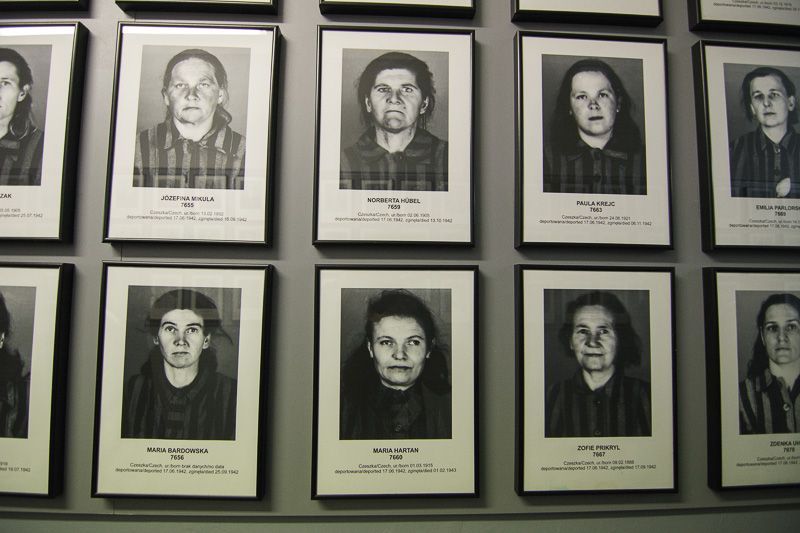
You will see the remains. Only a few were left from everything they kept and stole from the prisoners.
They took their belongings and stored them, the suitcases, the shoes, the glasses, the hair. You will see hundreds and hundreds of pigtails of the women they murdered and then sold.
The talits that were taken from them, the pans and all kinds of utensils, the combs and brushes, everything by the thousands, stored, were thrown away.
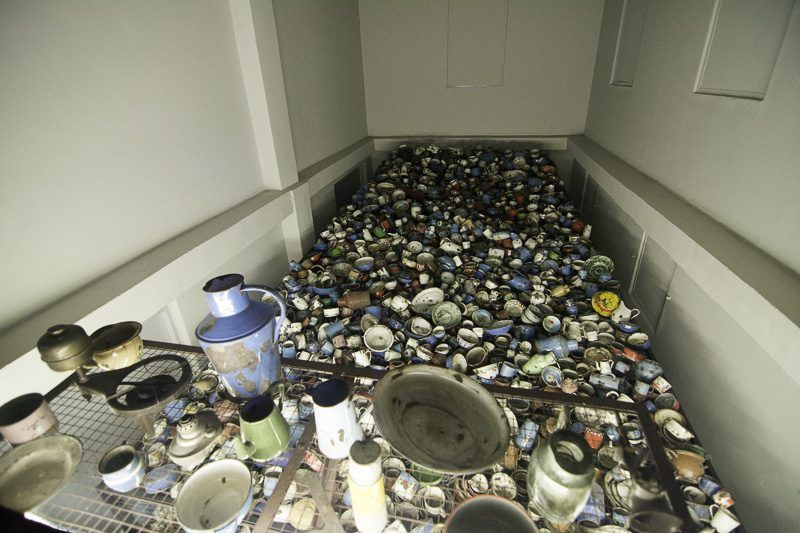
Block 11. The Beginning Of The Gas Chamber
It was in Block 11 where the experiments with Zyklon B gas were carried out. There is no need to go into chemical explanations. They were basically cans containing absorbent pellets.
In contact with moisture in the air, these pellets gave off cyanide gas and were used to eliminate insect and rodent pests in homes and factories.
However, the soldiers realized that they could use it to eliminate prisoners.
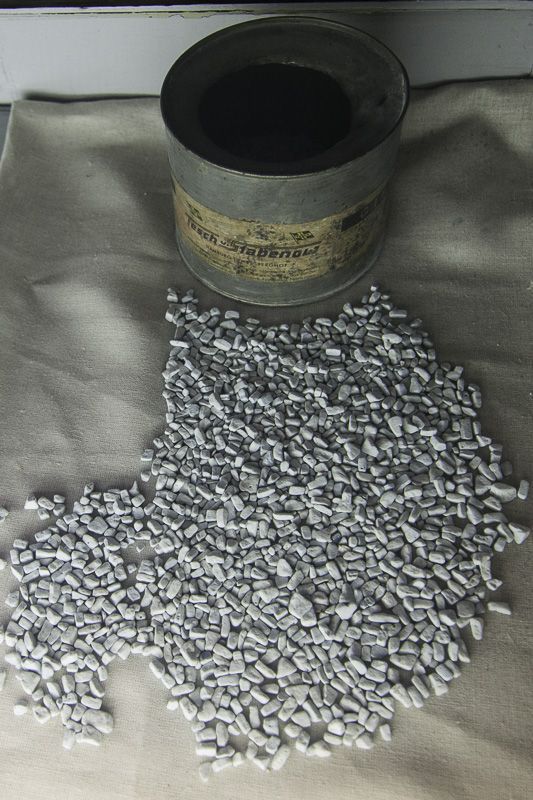
They locked four or five prisoners in cells and released open cans. They needed to know how many cans they required per person to be able to kill all the prisoners in the cell, so tests continued until they determined the number needed.
This meant that, at first, they did not succeed in causing death quickly, and the prisoners were in agony. They finally managed to determine the dose, 4 grams per person.
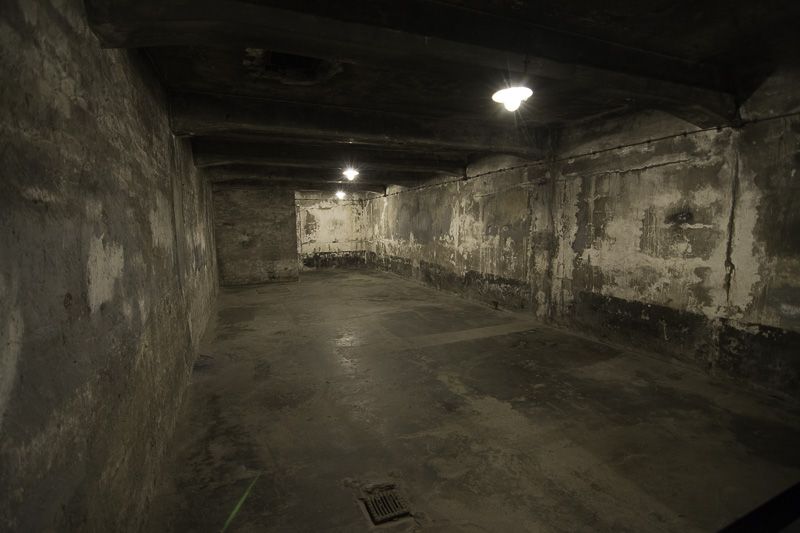
There is only one gas chamber left standing. You can enter, although out of respect for the thousands and thousands of lives lost there, you can’t talk. I was allowed to take a picture.
You can see the traces of people’s scratches on the walls, knowing they were being killed.
At the top, you can see the hole through which they threw the cans of Zyclon B. They were not showers or anything like that, as we have often imagined.

There were special workers who were Jews, called the sonderkommando.
They collected the corpses left over from the gas chambers, often their own families. They took them to the crematory ovens and burned them themselves, then collected the remains and ashes and disposed of them.
They were treated better and ate better, but they only lived for 6 months. After 6 months, they appointed a new sondekommando group whose first task was eliminating the previous group.
Expansion For Extermination Birkenau. Field III
However, the Auschwitz I camp became too small, and they began the expansion of Auschwitz II at Birkenau, about 3 km from Auschwitz I. It is a much larger camp than the previous one.
Here the railroad tracks ran directly into the camp, and the trains, loaded with Jews, were stopped for sorting, and all their belongings and luggage were taken away.
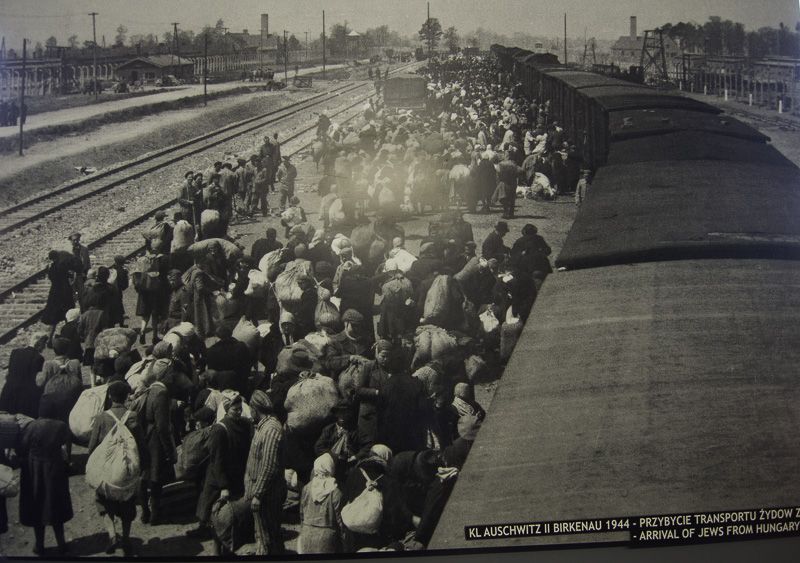
They divided the men on one side and the women and children on the other. Next, the doctor, by eye, decided whether they were fit to work or whether they went straight to the gas chambers.
The process had been greatly improved, and the gas chambers were designed for this purpose.
Instead of dumping the cans through a hole in the top, they poured the pebbles with Zyclon B gas down brass gutters with perforations, but there were never any showers.
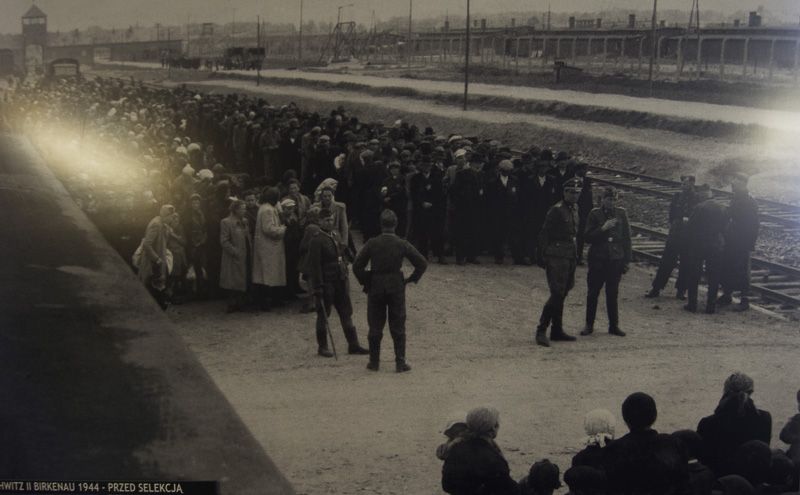
The camp is huge, and most of the barracks are destroyed except for the brick columns that served as a chimney for the small stove they used to build.
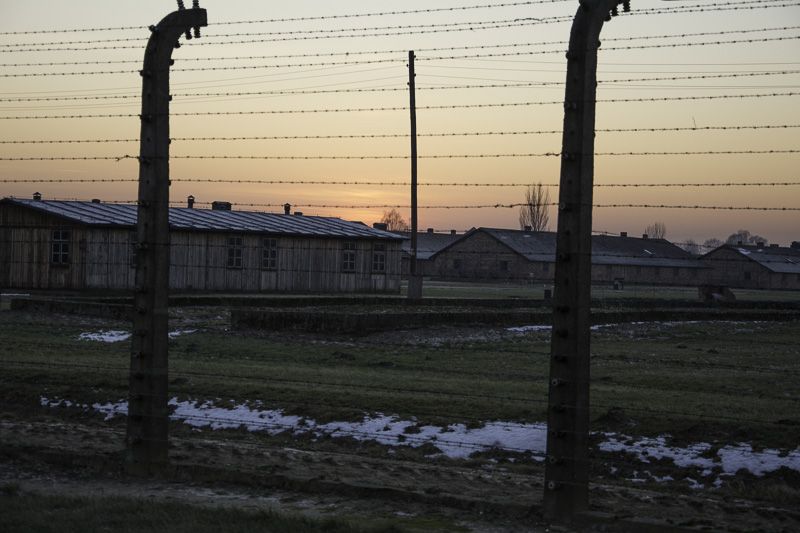
Only a few are left standing, and when you enter, remember the hundreds of people who died of cold, starvation, or murder in the same place.
You can also visit the barracks of the women who spent the least time in the camp.
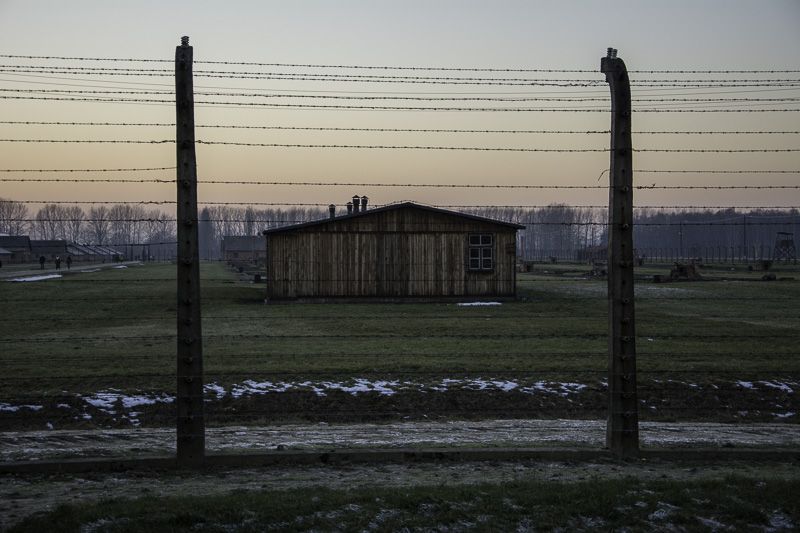
The sonderkommando, knowing that they would die sooner or later, decided to revolt and obtained explosives provided by female prisoners working in a weapons factory.
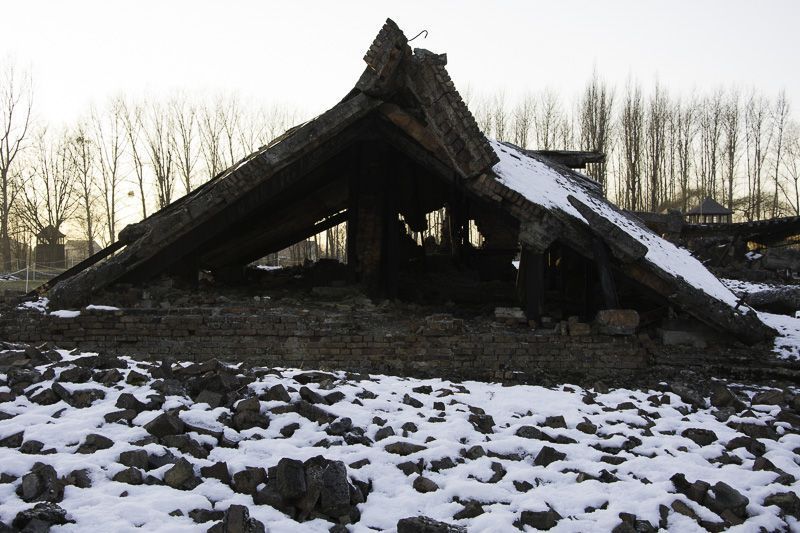
They blew up one of the crematories and tried to escape, but it was a failed attempt. The 250 sonderkommando were executed on the spot.
The remains of the destruction and rebellion have been left in the field as they were.
Next to the remains of the destroyed gas chamber 4 and some buildings at the end of the camp is the memorial for the victims of the Holocaust.
It is a visit to reflect, to become aware, and to know what should not happen again. Let’s learn from it.
Visiting the Auschwitz Birkenau Museum
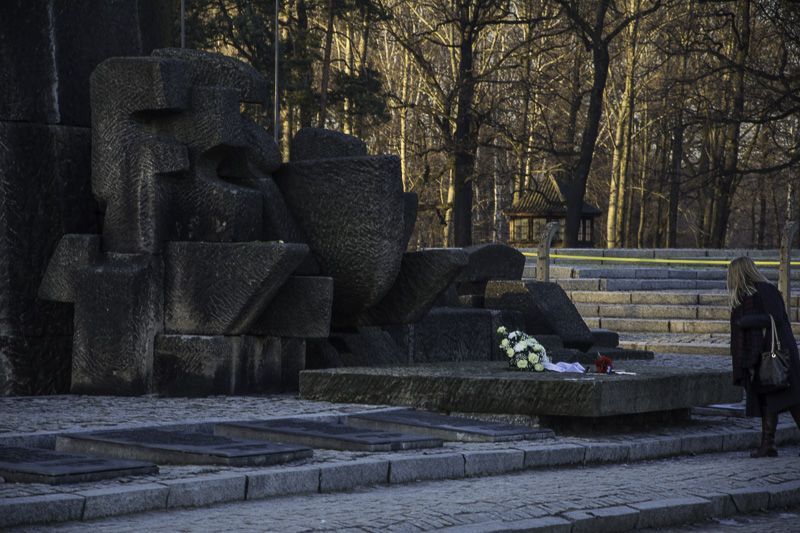
When planning your visit to the Auschwitz Birkenau Museum, you have several options to choose from. Both individual visitors and groups can benefit from guided tours, which are led by experienced educators who provide valuable insights into the history of Auschwitz and its victims.
Study tour groups can visit specific areas such as Block 2 and 3 of the former Auschwitz I camp and the wooden hospital barracks (B-80 and B-210) at the Auschwitz II-Birkenau camp. These are preserved in their original condition to provide an authentic experience.
As a visitor, you should be aware of the rules for visiting the museum. It is crucial to show respect for the memory of the victims and adhere to the regulations set forth by the Auschwitz-Birkenau Memorial and Museum.
Some of these rules include not entering the museum with large bags or luggage and avoiding loud conversations or noise during your visit. Photography is allowed, but be sure to follow any restrictions in specific areas.
Upon arrival at the museum, go to the Visitor Services Center to acquire your entry pass and, if desired, your Auschwitz Memorial Guide. This guide will help you navigate the vast grounds and provide additional context to your visit.
The center also offers additional information on education programs and activities related to the history and lessons from Auschwitz.
Fees for guided tours vary depending on the type of tour and group size. General tour options are available for those who want a comprehensive overview, while more focused tours can take you to specific areas such as the Central Sauna or the Roma camp section.
Choose the tour that best fits your interests and time constraints.
Visiting the Auschwitz Birkenau Museum is an essential experience to better understand the history of the Holocaust and its impact on the world.
During your time at the museum, take a moment to reflect on the immense suffering and loss that took place within those walls, and let it serve as a reminder of the importance of education, tolerance, and mutual understanding.
Items Not Allowed in the Museum
When visiting the Auschwitz-Birkenau Museum, it’s essential to be aware of the items that are not allowed on the premises. This ensures that you maintain the appropriate solemnity and respect for the site’s historical significance.
First, bags and backpacks larger than 30x20x10 cm are not permitted inside the Museum grounds. This rule helps to protect the integrity of the site and its exhibits.
If you have luggage that exceeds these dimensions, there are luggage storage facilities available for use near the entrance.
Photography and Filming: While you can take photos and record videos at Auschwitz-Birkenau, there are certain restrictions in place. Flash photography is prohibited, as it can damage the delicate artifacts on display, and some areas of the complex might not allow photography at all.
Make sure to read signage carefully and follow the guidelines set by the Museum staff in this regard.
In addition, please refrain from touching or leaning on barriers, such as barbed wire fences, around the site. Doing so can cause damage to the historical structures and can be disrespectful to the memory of those who suffered there.
By adhering to these rules and guidelines, you can help preserve the solemn atmosphere at Auschwitz-Birkenau and ensure the site remains a respectful memorial for future generations.
Rules for Visiting With Children
When planning a visit to Auschwitz Birkenau with children, it’s important to consider their age and emotional readiness. The official guidelines from the memorial staff recommend that children under 14 do not visit the site.
However, this is not a strict rule and ultimately depends on the discretion of the parents or guardians.
Keep in mind that Auschwitz Birkenau is a solemn and sensitive place, so it is crucial to prepare your children for the emotional impact of the visit. Before visiting, discuss the historical context and significance of the site to help them understand what they will see.
Make sure your children are aware that they are obliged to dress in a manner that is appropriate for a place of this nature.
When planning your visit, allocate at least 90 minutes for Auschwitz I and a similar amount of time for Auschwitz II-Birkenau. It is essential to take in both parts of the camp to get a proper sense of the place.
Please remember that the duration of the visit is determined solely by the individual interests and needs of the visitors, so adjust your schedule accordingly.
On your visit, ensure that you and your children follow the given rules and maintain a respectful demeanor as you explore the grounds.
Visiting Auschwitz Birkenau can be an overwhelming experience, so provide your children with the necessary emotional support both during and after the visit.
Ultimately, it is up to you to decide if your children are ready for this important and educational experience.
Understanding the Significance of Auschwitz Today
As you visit Auschwitz-Birkenau, it is essential to understand the significance of this historical site in the present day. Recognized as the largest and most notorious concentration camp operated by Germany during World War II, over 1.1 million men, women, and children tragically lost their lives here.
The Auschwitz-Birkenau complex holds a crucial place in the collective memory of the Holocaust. This site bore witness to the horrors of genocide, with approximately 1.3 million people deported to the camp between 1942 and 1944.
As you walk through the empty barracks, barbed-wire fencing, and solemn exhibits, you are reminded of the inhumanity that occurred at this location and its lasting impact on world history.
A visit to the Auschwitz Memorial is an opportunity to experience the authenticity of this former concentration and extermination camp. The memorial consists of two parts: Auschwitz and Birkenau.
Both segments offer a vivid perspective on the conditions that prisoners were subjected to, the cruelty of the Nazi regime, and the scale of the atrocities committed.
By exploring this site, you gain a profound understanding of the unique place that Auschwitz occupies in the global narrative.
Plan Your Trip to Poland
- What to See in Poland in 7 days
- Krakow 4-day-Itinerary
- What to See in Warsaw
- Visiting the Warsaw Ghetto
- Visiting the Salt Mines of Wieliczka from Krakow
Last Updated on 22 October, 2023 by Veronica





